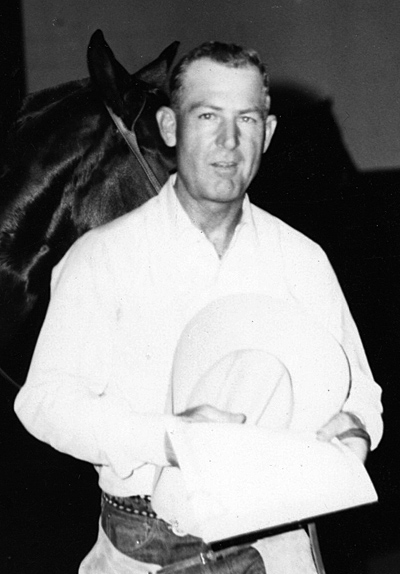The creation of the NCHA Super Stakes in 1981 set up a perfect Triple Crown relationship for the three major Fort Worth events – the Futurity, the Super Stakes, and the Derby. In 1983, Smart Little Lena introduced the world to a new era in cutting horse competition, when he made a winning sweep of the 1982 NCHA Futurity, as well as of the 1983 NCHA Super Stakes and NCHA Derby, and became cutting’s first Triple Crown champion.
But before revisiting the 1983 Super Stakes, a short historical overview of the NCHA Derby is in order.
Prior to 1970, the NCHA Futurity, limited to three-year-olds, was the only official show defined by age restrictions. As Futurity nominations grew, from 49 in 1962, to 539 in 1969, and purses increased four-fold, the demand for cutting-bred and trained show horses increased, as well.
In 1969, Cee Bars Joan earned $15,724 for her NCHA Futurity win. As a gauge to the impact back then of one event with a first prize of over $15,000, consider that in 1970, the average American’s annual salary was $7,564. The logical next step then, for NCHA organizers, was to create another event similar to the NCHA Futurity, but restricted to four-year-olds.

In 1970, eleven years before the first Super Stakes, the NCHA Maturity was inaugurated at Tingley Coliseum in Albuqerque, N.M. Limited to four-year-olds, and with procedures and rules modeled after those of the NCHA Futurity, the premier Maturity offered a gross purse of $18,237, with 45 entrees from 86 original nominees.
Three judges officiated at the first NCHA Maturity – Jim Reno, Leroy Ashcraft and Willard Davis. Competition consisted of two go-rounds, the semi-final, and the finals. Before the Futurity, final placing in events was calculated from cumulative totals, so it was a departure for the Futurity and Maturity to pay the big money on the last run.
Although the Futurity had initiated the first non-pro division in 1969, the Maturity did not include non-pro competition until 1975, when the event was moved to the Heart of Texas Arena in Waco, Tex. and renamed the NCHA Derby. Ninety-two entries competed for a purse of $25,093 in that year, with 18 non-pro entries competing for $1,800 within the go-rounds.
Diagnostic Data Inc., the makers of Drive feed supplement, came on board in 1977, as the first NCHA Derby sponsor and added $10,000 to a total purse that had grown $47,833. That year also marked the initiation of NCHA’s new five-judge system.
The NCHA Derby was held in Waco until 1981, when it was moved to Fort Worth’s Will Rogers Memorial Coliseum, featuring 211 entries and a purse of $167,725. With the exception of 1987, when it was held at the Bell County Expo Center in Belton, Tex., while Will Rogers Memorial Equestrian Center was under construction, the NCHA Derby has remained a Fort Worth, fixture, along with the Futurity and the Super Stakes.
In 1988, NCHA added separate 5-year-old and six-year-old “Classic†and “Challenge†divisions to the Derby agenda, incorporating all three age divisions into the Summer Spectacular. In 1995, the Classic and Challenge divisions were combined into one division called the Classic Challenge.
